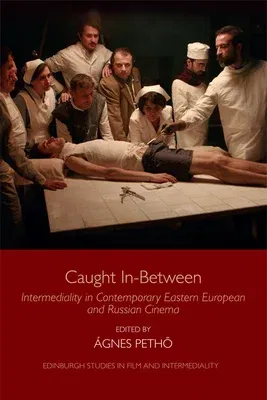Caught In-Between: Intermediality in Contemporary Eastern European and Russian CinemaHardcover, 31 March 2020

Qty
1
Turbo
Ships in 2 - 3 days
Only 1 left
Free Delivery
Cash on Delivery
15 Days
Free Returns
Secure Checkout

Part of Series
Edinburgh Studies in Film and Intermediality
Print Length
254 pages
Language
English
Publisher
Edinburgh University Press
Date Published
31 Mar 2020
ISBN-10
1474435491
ISBN-13
9781474435499
Description
Product Details
Book Format:
Hardcover
Country of Origin:
US
Date Published:
31 March 2020
Dimensions:
23.39 x
15.6 x
1.6 cm
ISBN-10:
1474435491
ISBN-13:
9781474435499
Language:
English
Pages:
254
Publisher:
Weight:
557.92 gm